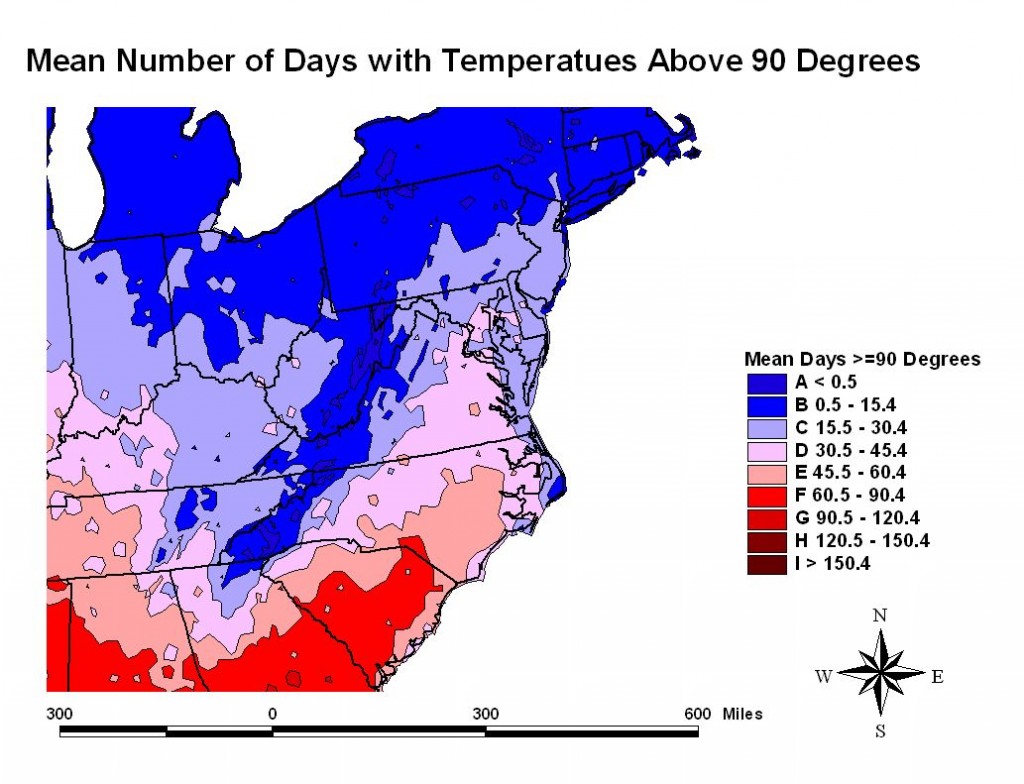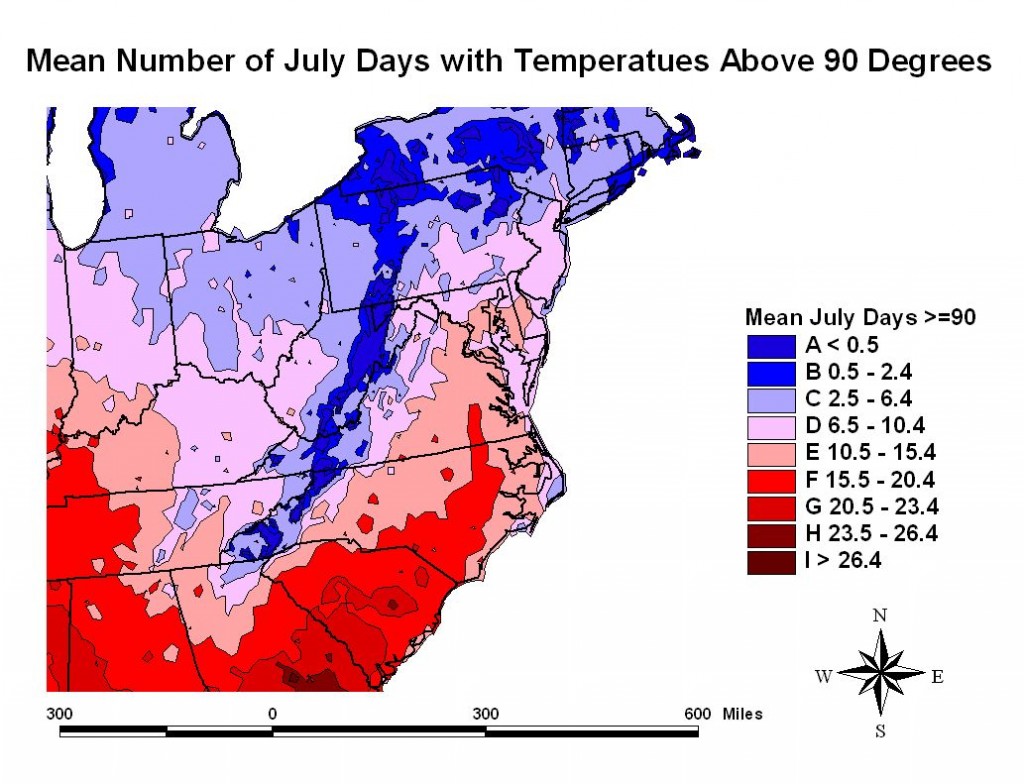In the central and southern Appalachian Mountains, summer climate appears to be an important factor influencing the breeding distribution of Northern Saw-whet Owls. Breeding records of Northern Saw-whet Owls in North Carolina, Tennessee, Virginia, West Virgina and Maryland are restricted to higher elevations of the Appalachians, and to date there are no confirmed breeding records for Georgia and northeastern Alabama, which lie at the very southern tip of the Appalachians. Northern Saw-whet Owls are sensitive to temperatures that exceed 100 degrees Fahrenheit, and exposure to higher temperatures have been shown to cause thermoregulatory stress and death (Ligon 1969). Based on this, the two maps below illustrate the distribution of the cooler climatic areas of the central and southern Appalachains where breeding Northern Saw-whet Owls could be expected to be found breeding.
Any documentation of breeding Northern Saw-whet Owls south of West Virginia and Virginia are important additions to our knowledge. If you know of documented breeding records in southern states, please contact Dave Brinker so that this information can be added to the Project Owlnet web site.
To date breeding records south of Pennsylvania have been limited to areas where the mean number of days during July above 90F does not exceed 5-6 days (A through C on the map below, but south of Pennsylvania mostly A and B).
The extreme risk of heat stress that Northern Saw-whet Owls face outside of the Appalachians in the southeastern U.S. is illustrated by the map below. Long hot periods where the number of days with maximum temperatures over 90 degrees Fahrenheit exceeds 30 during a summer extend well up the coastal plain into Maryland. Suitable cool climatic conditions for breeding are probably restricted to those areas of the southeast where there are fewer than 15 days per year that exceed 90 degrees.
 As climate changes in the future the chance that breeding by Northern Saw-whet Owls will persist in the southern Appalachain Mountains will decrease markedly. It is important that we document the breeding distribution of this Northern Saw-whet Owls in the southeastern U.S. now so that we will better understand the impacts of climate change as our world continues to deal with this critical impact of humans upon our earth.
As climate changes in the future the chance that breeding by Northern Saw-whet Owls will persist in the southern Appalachain Mountains will decrease markedly. It is important that we document the breeding distribution of this Northern Saw-whet Owls in the southeastern U.S. now so that we will better understand the impacts of climate change as our world continues to deal with this critical impact of humans upon our earth.

